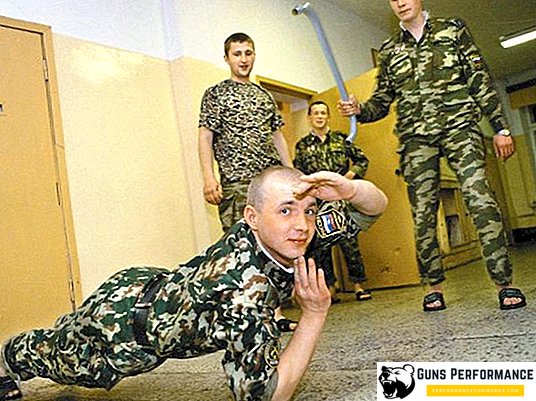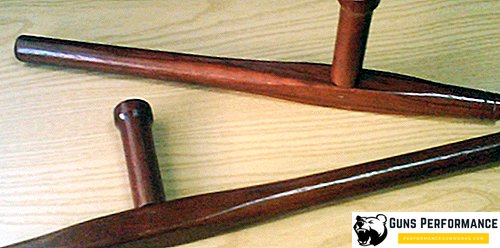
Tonfa is a type of cold weapon of shock-shattering action, which is currently widely used by law enforcement and security agencies in many countries of the world.
This strange (at first glance) gizmo began its combat journey as an agricultural inventory, along with which it helped the peasants from the Japanese island of Okinawa to protect their lives and property in the harsh times of the Middle Ages. Although, most likely, Okinawa is not the home of the tonfa, such clubs are very common throughout Southeast Asia.
Tonfa has an extremely simple and uncomplicated construction: it is a wooden stick of round or square cross-section with a length of 50-60 cm with a perpendicular handle, also made of wood. The handle has a massive top and is installed at a distance of about a third (sometimes a quarter) of the length from one of the ends. You can also add that a single standard for manufacturing tonfa did not exist. The size of the weapon most often picked up by the hand of a person. For several centuries, tonfa has undergone almost no changes.
The design of this uncomplicated, but very effective weapon took root not only in Okinawa, but also in the rest of Japan. And so much so that the technique of possessing a club of tonfa (tonfa-jutsu) became an integral part of Okinawan first, and then of the Japanese Kobudo.
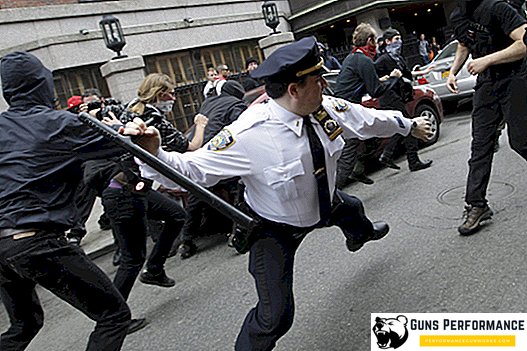
In Russia, tonfa refers to cold weapons, so its use even for self-defense is prohibited. For this you can earn a real prison sentence.
History of weapons tonfa
It is believed that the history of tonfa in Okinawa began in the XV century. There is a common legend that the ban to the peasants to wear any cold weapons led to the fact that they began to use various agricultural implements and innocuous household items for self-defense as well as for the struggle against the Japanese invaders. This is how Kobudo appeared - the traditional martial art of working with melee weapons. Moreover, the list of these weapons, besides tonfa, also included a number of objects that were quite harmless at first sight: a staff, a sickle, sai, a wooden oar and a chopper. Well, then Okinawan peasants began to create underground organizations that fought the oppression of the Japanese conquerors.

Everything in this story is nice and beautiful, but certain doubts about its reality just creep in. To create a high-level martial art - to which Kobudo undoubtedly belongs - requires a number of conditions. First of all, you must have a whole group of people who have the means and free time, and are ready to devote themselves to military exercises. Suppose that the Okinawan peasants plowed the ground during the day and trained hard at night, only he who has never done anything on this very land can do it. No less absurd is the assumption that the peasants could fight on equal terms with the samurai - professional warriors who devoted their lives to war and military exercises. Most likely, the Okinawan military elite was at the origin of the Kobudo.
Historians have no agreement on the origin of tonfa itself. It is believed that this item was a handle for the mill, with which the grain was ground. There is another version, according to which tonfa came to Okinawa from China, where it was used as a crutch for injured people.
Anyway, the Japanese quickly appreciated the new weapons, especially effective in the melee. Japanese Kobudo masters developed their own technique of using tonfa. They began to practice the pair use of tonfa. This master tonfa-jutsu in battle can successfully withstand any chopping or piercing weapons.
If we talk about batons in general, these weapons can be called the oldest and most deserved in the arsenal of law enforcement agencies. In Britain, the police received wooden batons in the middle of the XIX century, in Russia it happened at the end. In Japan, batons began to be used by police in the twenties of the last century.
After the victory in World War II, the Americans became acquainted with numerous Japanese martial arts, and in 1971, American Lon Anderson patented a new baton that looked like two drops of water like Tonfa. The inventor himself, however, always told that his weapon was inspired by memories of the “broken leg of a chair with a crossbar.” However, it was at this time in the United States that there was a real boom in martial arts and various weapons from Southeast Asia, which makes one doubt such assertions of the author of the famous rubber baton.
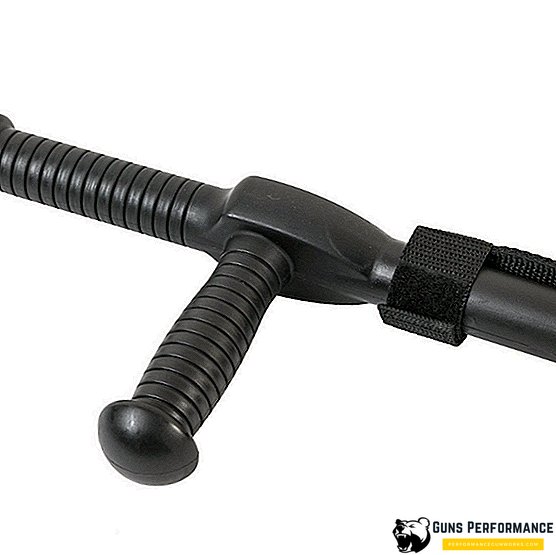
Tonfa for the police was named Prosecutor PR-24 and was standardized. The new baton had a length of 60 cm, a diameter of 3 cm, and a total weight of about 600-800 grams, depending on the material from which it was made. Despite the fact that the most famous is a rubber truncheon, it is also made from polycarbonates, epoxy resin, aluminum. The first installments of the Prosecutor PR-24 began to enter service with the American police in 1974.
The American police immediately liked the new weapon. With it, you can effectively control the situation without the use of firearms. Tonfa could not only effectively defend, but also hold a criminal room or a painful hold against him. On closer examination, it became apparent that this simple and inconspicuous weapon concealed a huge potential.
Very quickly from America, police tonfa spread all over the world; at present, such a rubber truncheon has become one of the most recognizable types of police weapons. Rubber truncheon adopted by the Russian police.
In 1989, the police "doubleltonfa" appeared in the United States, it received the name AKD-48. This weapon had two handles located at different ends of the stick and directed in opposite directions and was more suitable for holding grabs, painful holds, throws.
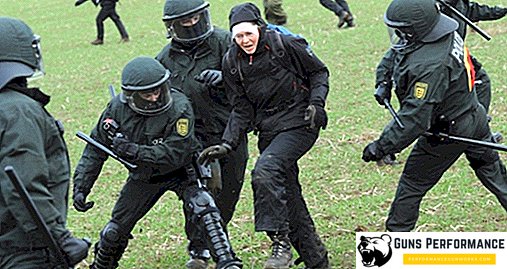
Technique work with tonfa
Tonfa is a weapon that allows a fighter to use a very wide range of strikes, blocks, grabs and other techniques during a bout. Usually the tonfa is taken by the handle, so that the long end of the stick is parallel to the forearm, and the short end comes out from behind the fist.
The long end of the baton allows you to fend off any enemy strikes inflicted by both limbs and melee weapons. In this case, you can apply powerful fly or jerk strokes with your forearm. The latter are the most effective, they will be applied with a short part of tonfa, which is a continuation of the fighter's fist. However, the long part of the weapon that can be thrown forward along with the elbow is also suitable for them. Tonfa is often used in pairs.
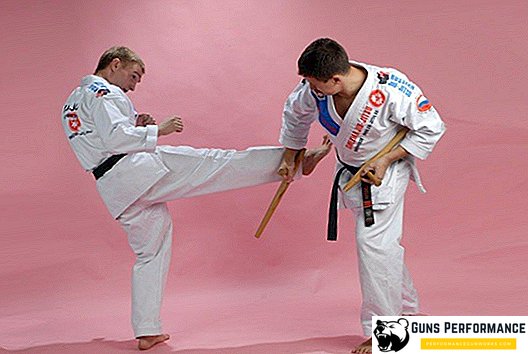
Rotating the weapon around the handle, sandwiched in the palm of your hand, you can carry out a number of the strongest swing strokes.
In addition, with the help of tonfa it is possible to very easily pick up the opponent's limb and deprive him of his balance.
For US law enforcement officers, a special technique has been developed for working with a new baton. Areas of the human body that can be hit with Tonfa received their classification. So, for example, strikes on the extremities are very effective and can immobilize a suspect, but at the same time they cause temporary and minimal damage and simply disable the person for a while. And the face, the back and the chest are areas that can cause serious injuries, so it is recommended to hit them only in extreme cases.
Currently in the world there are a large number of different martial arts schools that teach possession of tonfa. They are very different. Some of them are closer to the Japanese and Okinawan classics, in such schools they carefully study and work out various kata and get belts of different colors. Other schools are more oriented towards the present and the practical side of using these weapons.


